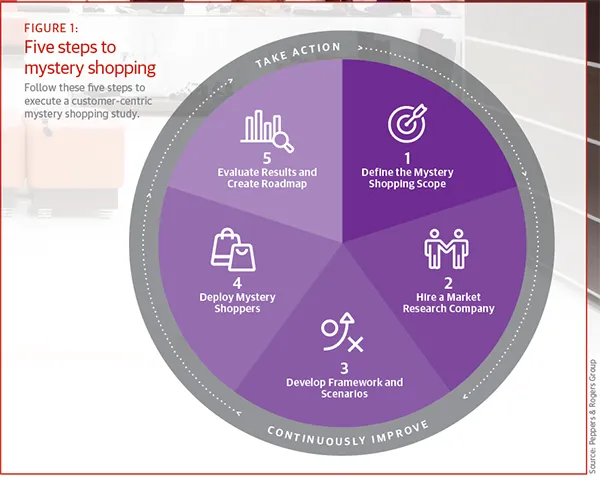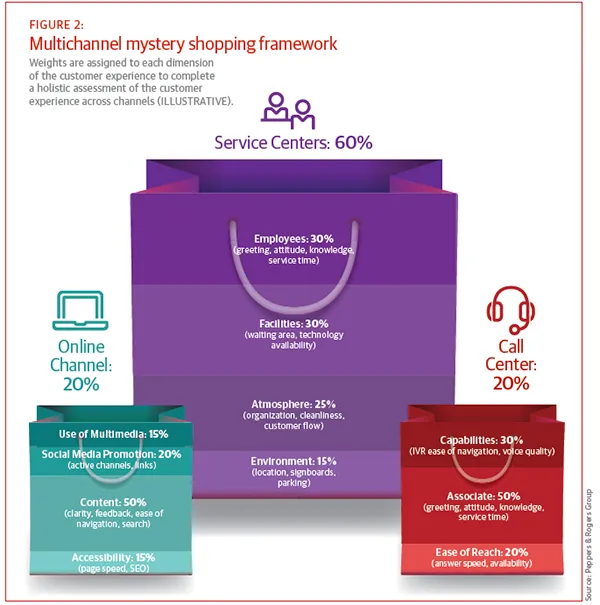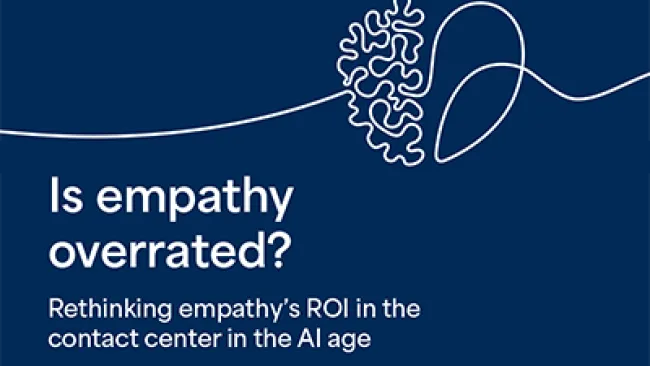It’s a great time to be a customer. Companies are doing more than ever before to learn about customers’ needs, preferences, and expectations. Simply having great products isn’t enough anymore. And while there is so much new technology being touted to help firms collect and analyze information, one method has stood the test of time: mystery shopping.
Mystery shopping has been around since the 1940s, when some retailers formalized efforts to understand how well they serve customers. Since then it has evolved as a feedback tool used externally by market research companies and watchdog organizations, and internally by companies to gauge how well customer expectations are met.
If you think mystery shopping is an antiquated retail research method, think again. According to the Mystery Shopping Providers Association (MSPA), mystery shopping is a $1.5 billion industry designed to measure quality of service, evaluate regulation compliance and workforce development objectives, and gather specific information about products and services. Though it began in retail, it can be applied to any industry interested in capturing the customer point of view. The MSPA estimates that 1.5 million mystery shoppers visit retail, healthcare, restaurants, manufacturers, and government agencies each year in the U.S. alone.
This is because customer satisfaction ratings and positive customer experiences are typically among the core KPIs for any organization. The assessment of the current customer experience denotes an essential step in realizing and highlighting the pain points across the customer journey. Mystery shopping captures a particular perspective of the customer experience that complements other feedback techniques such as voice of the customer (VOC) analysis, customer satisfaction surveys, individual interviews, and panel discussions.
Mystery shopping is conducted in a variety of ways. The most common are inquiry, transaction, and shadowing. An inquiry is when a shopper asks for information about a particular service without taking any further action. Transactions follow the inquiry process through to complete a sale or other transaction. The shopper in this case receives the products or services purchased. Shadowing is when a mystery shopper accompanies a real customer to observe his or her experience in real time.
The potential insight derived from mystery shopping is critical, especially as organizations work to meet growing customer expectations. Therefore, it’s necessary to create a strategic plan that optimizes mystery shopping initiatives. A typical approach is divided into five sections: Define the scope of the study, hire a market research partner, develop the initiative’s framework and prospective scenarios, deploy mystery shoppers, and evaluate and create a roadmap from the study results (see Figure 1).

1. Define the mystery shopping scope
It is essential to develop a solid scope for the study. The organization’s mandate and strategic objectives imply which services are among the most frequent, most important, and should be assessed. A caveat here is that if a service is used by important customer segments or individuals, it should be assessed regardless of frequency. And services that have previously received unsatisfactory customer feedback should always be included in the mystery shopping exercise to probe the pain points behind negative ratings.
After selecting the services that will be included in the study, the next step is to highlight the service requirements and set key performance indicators (KPIs) in order to assess service performance against those metrics. Determine which channels to assess, including in-person service centers, call centers, and IVRs, online channels, and mobile applications. Schedule visits as staggered as possible throughout the duration of the study and vary them across different days and times, to represent the entire spectrum of experience possibilities. This reduces the effect of special situations and helps to evaluate the organization’s performance in a holistic manner.
Add a strategy layer: The scope of the mystery shopping exercise needs to be developed accurately, since it constitutes the basis of the entire study. Be mindful of industry best practices and benchmarks for customer-centric channel performance from which to set objectives and metrics. In addition, define KPIs and other metrics for each specific part of the exercise in order to compare the current state of the customer experience to an ideal state.
2. Hire a market research company
It is rare for a company to plan and execute an entire mystery shopping program without help. Often firms hire a market research company to manage the field execution. They are responsible for hiring, training, scheduling, and deploying mystery shoppers, as well as reviewing and verifying the results.
Hiring the right market research partner is crucial for the success of the program. It involves a number of considerations that influence the program’s time, effort, and cost:
- Geographical coverage: Make sure the market research company covers the entire geographical focus of the study.
- Shopper demographics: Mystery shoppers must blend in with average patrons. This information should be determined when setting service requirements. Be sure your partner can source enough mystery shoppers who fulfill the criteria.
- Type of visits: Each type of mystery shopping visit (inquiry, transaction, shadowing) requires a different skillset, time commitment, and price point from potential partners.
- Employees or outsourced mystery shoppers: Determine how the shoppers are going to be sourced (professional, freelancer, part-timer) and what type of training and experience they should have.
- Supervision and verification of the fieldwork: The mystery shopping visits must be verified, either through questionnaire audits or by sending field supervisors to monitor shoppers. It may add time and cost to the project, but it will also provide an organization with certainty that the program represents the actual customer experience.
- Reporting: Different market research companies report differently. Both parties must agree on the content and format of the final deliverables.
3. Develop the mystery shopping framework and scenarios
With a program strategy and market research team in place, the next step is to create a framework for how to conduct a program. A framework defines the different elements of the experience to be assessed, along with the weight each element contributes to the overall customer experience. Figure 2 depicts a hypothetical framework based on a multichannel customer experience environment.

For each element, a set of questions is developed to evaluate performance at the point of interaction. The questionnaire aggregates the different questions and the expected answers, where each answer maps to a specific quantitative score. Create the questionnaire to be efficient and effective—ask the shopper to answer questions that relate to the scope of the project and can be acted on by the company.
The next step is to detail the different real-life scenarios that the mystery shoppers will conduct. The scenarios should be simple, realistic, and drawn from regular day-to-day activities. These will serve as a guide for the mystery shoppers, enabling them to better understand the situation and motivation for their shopping activity.
Add a strategy layer: Scenario development can be made easier if a customer journey map has already been created to show how customers experience a company and through what touchpoints they interact across the value chain.
4. Deploy mystery shoppers
Prior to deployment, either the organization or the market research partner will choose appropriate mystery shoppers to go shopping. They will need to be trained on the framework and scenarios, as well as how to record their findings. After briefing the shoppers, they can be deployed. Regular debriefing sessions should be conducted to capture lessons learned during the process and continuously improve the quality of the mystery shopping experience.
Add a strategy layer: The deployment phase is a very critical step in the study and is prone to observational and human error. Utilize analytics capabilities where possible to ensure all recorded results are of high standards and reflect an accurate picture of the current state of the customer experience.
5. Evaluate results and create an action roadmap
The last step is the most delicate and critical step to extract valuable insights from the exercise. First, the organization must store and aggregate all of the mystery shopping data to keep track of the evaluated areas and channel performance. Accuracy is critical during this data entry process. The data needs to be checked frequently to catch any mistakes or scoring disparities before conducting an analysis. Then, a thorough review of the results can help a company evaluate a score for each dimension and element for each channel based on the initial framework and weights.
The aggregated results show well-performing areas and shed light on potential areas of improvement. Plotting the strategic importance and impact of individual dimensions versus the organization’s overall score can offer valuable insights on critical areas for improvement. Often, such a matrix is a good example of how the results can be visually represented to highlight areas that require immediate action.
It is essential to present the results in an action-oriented manner to ensure that improvements are implemented. Improvement opportunities should be defined and
prioritized with an implementation roadmap that includes a timeline, responsibility, and KPIs for each initiative.
And once that project is completed, a continuous cycle of improvement can then be initiated, beginning the mystery shopping process over again and using the previous program data as a benchmark.
Add a strategy layer: Analytics can draw extra insights from the data, identify root causes of issues, and help executives prioritize vulnerable customer experience areas. In some cases an organizational transformation may be necessary to take the organization from its previous state to one in which the customer sits at the center.
Benefits of a mystery shopping approach
Peppers & Rogers Group has helped conduct mystery shopping exercises for several federal government ministries and authorities in the EMEA region. The programs touched a multitude of channels including in-person service centers, call centers, and online. Based on the assessments, the clients identified points of strengths, as well as improvement areas to build on their road to experience excellence. They now have evidence and customer insight from which they can raise delivery standards and build efficiencies across the different channels. Several clients acted on quick wins—particularly those related to the online channel. Some clients refocused their efforts on customer service across channels and launched projects to bridge gaps revealed after the assessment. As a result, relationships with citizens and consumer perceptions of those government entities are improving.
Conclusion
Mystery shopping is a time-honored customer feedback vehicle that can uncover customer insight not otherwise known. With a five-step strategic approach, mystery shopping can be applied to any industry that considers customer experience a differentiator. ?















